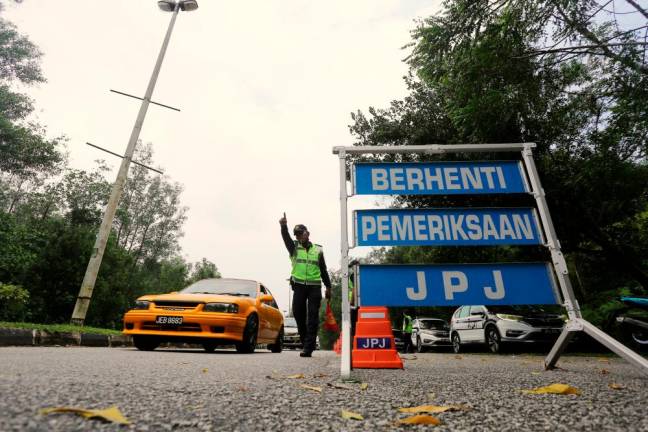PETALING JAYA: The Malaysian economy is projected to expand between 5.3% and 6.3% this year, driven by continued external demand and improved domestic economic activity, according to Bank Negara Malaysia (BNM) governor Tan Sri Nor Shamsiah Mohd Yunus (pix).
The global economy is projected to continue its recovery and BNM is expecting expansion of between 3.8% and 4.3%, which will support Malaysia’s external sector.
“The continued extension in external demand and the global uptake cycle will benefit our economy, especially for Malaysia’s E&E products which account for more than a third of our exports.
“The growth of global semiconductor sales continues to be above its long-term average. With commodities accounting for more than 10% of total exports, the higher prices will provide further impetus to Malaysia’s world exports,” Nor Shamsiah told reporters yesterday at BNM’s virtual press conference in conjunction with the publication of BNM’s Annual Report 2021 (AR 2021), Economic and Monetary Review 2021 (EMR 2021) and Financial Stability Review for the second half of 2021 (FSR H2’21).
The global growth outlook in 2022 will be shaped by three factors – the state of the Covid-19 pandemic, the military conflict in Ukraine, and the pace of policy normalisation in major economies.
“Higher vaccination coverage and the introduction of new medications will allow countries including Malaysia to transition into endemic management of Covid-19. However, severe resurgences could still disrupt economic activities. This is expected to weigh on growth prospects via several channels including the disruptions from the trade and financial sanctions, higher commodity prices, and volatile financial markets.
“The normalisation of policy support in an environment of high inflation and recovery in demand in the advanced economies will have bearing on the global economy and possible tightening of financial conditions,” she said.
Malaysia’s economic growth will be underpinned by both external and domestic demand against a challenging operating environment, Nor Shamsiah said.
“Key growth drivers include continued expansion in external demand supported by the tech upcycle; the lifting of containment measures and reopening of international borders; an improvement in employment and income prospects; and continued access to targeted policy measures,” the BNM governor said.
Key challenges this year include developments in the Covid-19 situation, risk aversion which will affect household and business sentiments, and minor disruptions due to absenteeism.
The ongoing geopolitical conflicts wil lead to elevated commodity prices and supply chain disruptions. Lastly, elevated cost and price pressures will change the cost of living and hurt profitability concerns weighing on household and business sentiments.
“Risks to the economic outlook remain tilted to the downside, upside risks from external and domestic demand include higher-than-expected global growth and stronger-than-expected improvement in tourism-related sectors amid the reopening of borders.
“Downside risks from Covid-19, geopolitical conflicts, and cost pressures include the emergence of severe, vaccine-resistant VOC (Variants of Concern); domestic policy uncertainty; weaker-than-expected global growth; a further escalation in geopolitical conflicts; worsening supply disruptions and labour shortages; heightened financial market volatility leading to tightening financial conditions; and higher-than-expected cost and price pressures weighing on business and household sentiments,” Nor Shamsiah said.
Monetary policy in 2022 will continue to facilitate a sustainable economic recovery while preserving price stability to ensure the degree of accommodation is consistent with the improving economic environment. It will be determined by new data amid heightened uncertainty and fast-evolving conditions, and any potential policy adjustments would be gradual and measured.
“BNM’s financial position remained stable in 2021 as of Dec 31, 2021. Total assets totalling RM551.6 billion. Out of the net profit of RM12.8 billion, RM7.8 billion was transferred to the general reserve fund and RM5 billion was paid as a dividend to the government,” she added.
“The balance of risks remains tilted to the downside, mainly arising from developments surrounding Covid-19 and geopolitical conflicts.
“Financing to businesses and households will continue being supportive of economic activity. It is imperative to pursue structural reforms to ensure the Malaysian economy emerges from the crisis stronger and more resilient,” Nor Shamsiah said.













